708 views
owned this note
---
title: Minutes of the PS & SPS User Meeting
---
# PS-SPS Users Meeting for Week 50 held on 11 December 2025
Coordinator for week 48 - 50: Martin Jäkel
**PS / SPS User schedule** : Current [[v1.5.1](https://ps-sps-coordination.web.cern.ch/ps-sps-coordination/)]. Latest sub version attached to Indico Agenda.
**Injector schedule** : 2025, [v1.3](https://edms.cern.ch/document/3057281/latest), (v 1.4 in preparation):
:::success
**EuroLabs :** Application are CLOSED. [Please submit your requests](https://euro-labs-cern-ta.docs.cern.ch).
We might also be able to accept requests for 2026, starting again January. Contact : ps-sps-coordination.support@cern.ch
:::
## News from the PS & SPS Physics Coordinator
M.R. Jäkel, P. Martinengo
**End Physics Run 2025 Information**
* NA Physics p+ : 24.11.2025
NA Physics Pb Ion 28.11.-08.12.
* EA Physics PB Ion (T8) 17.11.-08.12.
* EA Physics p+ (T9/T10/T11) 08.12.
**Last User Meeting 2025 : Thursday 11.Dec.2025**
:::warning
Call for FT Ion beam requests will be opened tomorrow.
https://asm.app.cern.ch/coordination/beam-requests
:::
:::danger
**Updated Injector schedule 2026** : [**Version 0.6**] (= 1.0)(https://edms.cern.ch/document/3180469/0.6/)
* 5th February Start n_TOF
* **11th February 2026** - Start of EA Physics
* **11th March 2026** – Start of NA physics
**First user meeting : 5. Feb. 2026**
:::
Reminder: *Beam time (main user) exceeding the limits of 2 weeks PS beam time and 1 week SPS beam time per year need the approval of one of these CERN committees: SPSC, LHCC or RB. Endorsment of DRDC or IEFC is a pre-requirement for longer beam time that still needs SPSC approval. Endorsement of beam time by the scientific committee does not guarantee the beam time can be scheduled.*
**Target intensities:**
See via [ASM](https://asm.cern.ch/experimental-area/experiments) (accessible from within the CERN network).
### News from the Facilities Operations Meeting (FOM/TIOC)
**Upcoming SPS MDs next weeks :**
https://be-dep-ea.web.cern.ch/content/md-planning-north-area
Dedicated SPS MDs - if not anounced differently - are taking place from 8:00 to 18:00
---
## PS Machine Report (Rubén García Alía)
- Mon-to-Mon availability of ~87%, mainly compromised due to several PS accesses (cavity 10-51 2x, injection septum vacuum)
- Some issues with AD (bunch length) and LHC (phase jitter) beams, and smooth end-of-operation for North and East Area ions, East Area protons and nTOF (until to Friday morning in this case)
## SPS Machine Report (Please insert your name)
## Safety (Marcus Jankowski)
- For special requests for next year, please contact the EP Safety Office in advance (custom lifting tables, pressure vessels, etc.)
## East Area Beam Status (B. Rae)
**General**: End of operation for 2025.
**T9**: Good operation last weekend.
**T10**: Good operation over the last weekend. One magnet was a little unstable at low current but fixed.
**T11**: No operation.
## East Area Users Tour de Table
### T8 Outgoing Main: HEARTS (Andreas Waets)
HEARTS@CERN 2025 run overview on Indico (https://indico.cern.ch/event/1589269/).
### T9 Outgoing Main: ALICE_RICH (Roberta Pillera, Nicola Mazziotta)
Smooth data taking untill Monday morning. We completed the positive beam momentum scan and the low momentum negative beam measurements. Data analysis is ongoing. Many thanks to all the CERN people involved for the support during these weeks!
### T10 Outgoing Main: STCF ECAL & PID (Yunlong Zhang)
Good Data Taking. In the past week, we have collect about 25 million events.
The preliminary results show that the performances of detectors are very good, and the qulity of beam is also good:-)
the energy response of ECAL is about 2%@1 GeV e+, I think the uncertainty of beam momentum is less than 1%.
Also, for the ratios of different particles, we will keep in touch with Laurie and Maarten, hope we can provide some useful data for the beamline.
Thanks for you all :-)

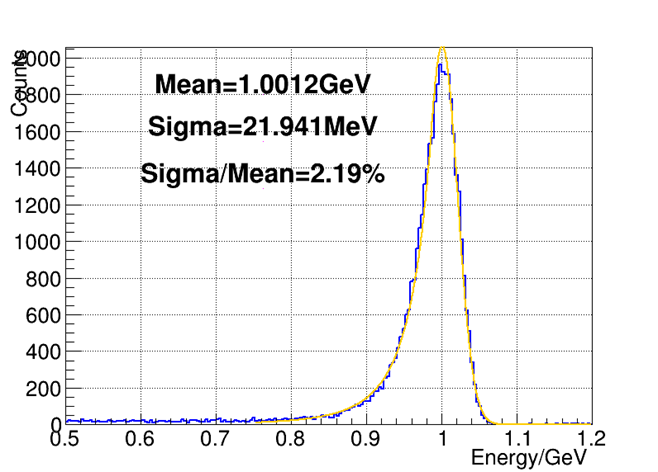

## North Area Beam Status (B. Rae)
**General**: End of operation for 2025. Please remember to leave the zones clear and tidy as there will be works during the YETS.
:warning: :construction_worker: In **PPE146** in H6 we are installing two new quadrupoles. The stairs from the main door down into the zone have been removed. Please access from the most upstream door close to H4. Please reach out to Bastien Rae during the YETS if there are any access issues.
**No Access**:
* 16 December from 06:00 to 06:30 (normal emergency test, all systems on the main/normal electrical network will be impacted); no access to the entire North zone (OK for the rest of the day)
* 17 December all day (AUG) - no access to BA80 (TDC2, TCC2), BA81 (TT81-TT85), EHN1
* 18 December all day (AUG) - no access to BA81 (TT81-TT85), EHN2, TCC8, ECN3.
See also [YETS Access Planning](https://be-dep-ea.web.cern.ch/experimental-areas/yets-25-26-access-planning).
## North Area Users Tour de Table
### H2 Outgoing Main: NA61_SHINE (Aleksandr Dmitriev)
The Pb beam was very stable in terms of intensity and spill structure!
We managed to collect the planned amount of statistics (107%).
We finished working with the beam on Monday morning, turned off all the equipment and put the systems into hibernation mode until next year.
Many thanks to everyone who participated in the work!
### H4 Outgoing Main: R2E (Daniel Prelipcean)
Fantastic campaign, achieving all our planned objectives.
1. Timepix chips:
i) at the given beam flux, but we were observing Single Event Effects (SEE) requiring soft resets at a rate of a 1 SEE/minute -> good for our purposes.
ii) acquired data at various azimuthal and polar angles (0, 15, 30, 45, 60, 75)
iii) used the detector to also calibrate the beam for the other setups

2. Nuclear Track Detector (NTD):
i) passive detector
ii) based on the live data from the Timepix, we irradiated the NTDs without reaching saturation (hopefully)
iii) reading the micrometric tracks in the NTD will be performed early 2026
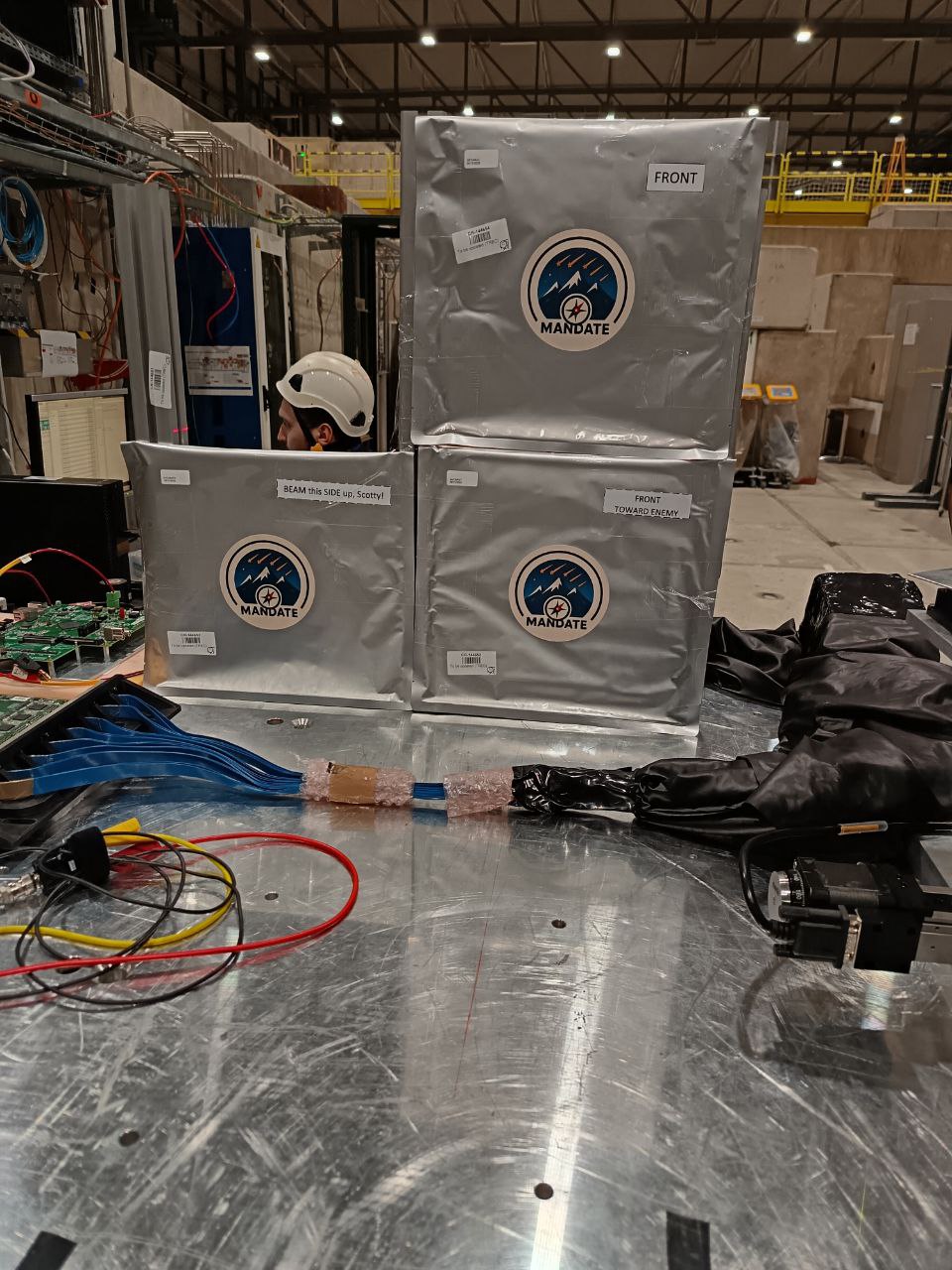
3. Scintillating Detector (parasitic)
i) detector commisioning (first actual beam except cosmics)
ii) tracks were observed in the readout, as expected
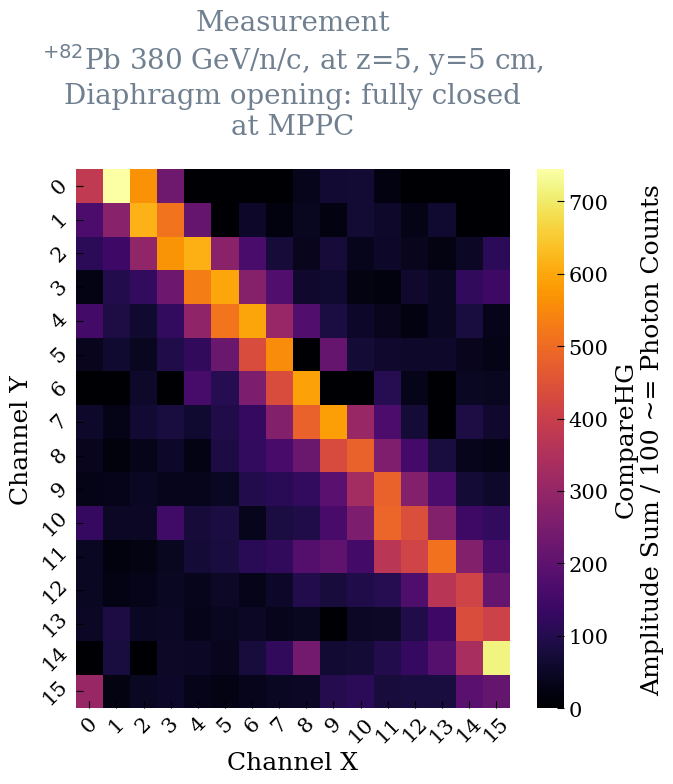
Huge thanks to everyone who contributed to setting up the beam and to this work!
### H8 Outgoing Main: NA60+ (Enrico Scomparin)
Test beam activities proceeded smoothly down to the end of the beam availability
Among the various activities:
- On Friday the He radiator in the XCET counter was replaced by CO2. The latter would become the choice for low-energy ion beams, due to the larger photon yield. An improvement in the resolution by a factor ~2 was indeed observed in spite of a ~4.5 times lower pressure 
The contamination induced on the Pb beam by the radiator gas itself did not show any appreciable difference between the two gases
- For future reference a pressure scan was carried out 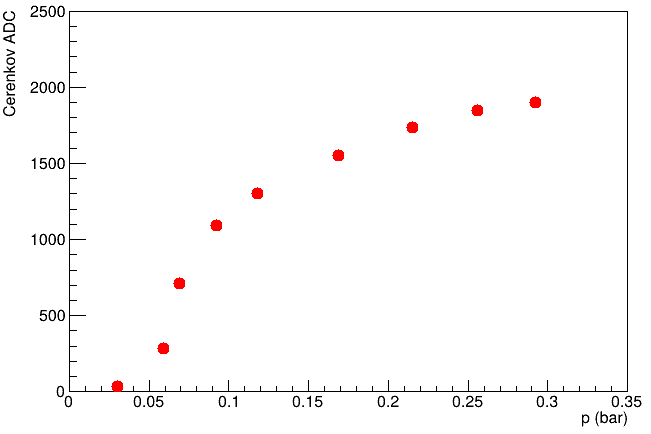
- Based on the discussion at a meeting with EA (Markus, Johannes, Maarten) a search was carried out to single out effects related to a 50 Hz frequency affecting the beam, that was observed by NA62 with protons. The search has led to clear results
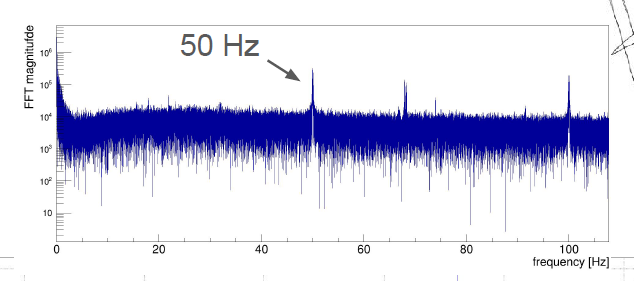
These are the distribution of the timestamps for MWPC read-out over ~1s and the corresponding frequency analysis

and this is the time distribution of the beam signal on our scintillators. Both detectors show the presence of such a structure. Potential effects in view of the experiment will be studied.
- Beam delivery was smooth within the LHC constraints. On the H8 beam line, several resets per day of the BEND325 magnet were needed. Did not ask for an intervention as our measurement were not time-critical, but the magnet may need to be checked.
Still thanks to all the beam crew for help and support!
---
## AoB
---
_Minutes by the respective speakers, edited by M. Jäkel and M. Malkin_